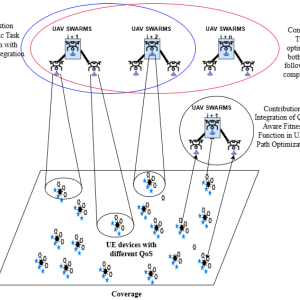In the rapidly evolving world of aerospace and defense technology, China continues to make remarkable strides. A recent development that has caught the attention of experts and enthusiasts alike is the successful testing of a Breakthrough with Rotary Detonation Engines. This groundbreaking achievement has far-reaching implications, not only in the military sector but also for the broader field of aviation. In this article, we delve into the details of this significant development, exploring the technology behind it, potential applications, and the impact it might have on the global aerospace landscape.

I. The Rotary Detonation Engine: A Game-Changer
At the heart of this remarkable achievement is the rotary detonation engine, a propulsion system that promises to revolutionize drone technology. This engine is a marvel of engineering, employing a cyclic process of detonations rather than the traditional combustion approach used in most engines. It offers several advantages, including:
- Efficiency: Rotary detonation engines have the potential to be significantly more efficient than conventional engines. This increased efficiency translates to longer flight times, a critical factor for drones used in various applications.
- Power: These engines can generate a substantial amount of power, which can be harnessed for various purposes, such as carrying heavier payloads or achieving higher speeds.
- Reduced Emissions: The detonation process is known for producing fewer emissions compared to traditional combustion, making it an environmentally friendly choice.
- Simplicity: Rotary detonation engines are often simpler in design, which can reduce maintenance and manufacturing costs.
II. China’s Pioneering Test Flight
China’s recent test flight of a drone equipped with a rotary detonation engine represents a significant step forward in this technology. While the specifics of the drone and the engine are closely guarded secrets, experts believe that this achievement has the potential to reshape the drone industry. It showcases China’s commitment to innovation and its determination to be at the forefront of aerospace technology.
III. Potential Applications
The implications of this technological breakthrough are profound and extend well beyond the military domain. Some potential applications of drones powered by rotary detonation engines include:
- Surveillance and Reconnaissance: These drones can cover larger areas and stay in the air longer, making them ideal for surveillance missions.
- Search and Rescue: The extended flight time and increased payload capacity make them valuable tools for search and rescue operations.
- Cargo Delivery: Companies seeking to revolutionize the delivery industry could benefit from these powerful drones, which can transport packages quickly and efficiently.
- Scientific Research: Rotary detonation engine-powered drones could aid in various scientific endeavors, such as monitoring wildlife, conducting atmospheric research, and more.
- Environmental Monitoring: The reduced emissions make these drones suitable for environmentally sensitive missions, such as monitoring air quality or wildlife conservation efforts.
IV. Impact on Global Aerospace Landscape
The successful testing of a rotary detonation engine-powered drone puts China at the forefront of the aerospace industry. It is a testament to the country’s commitment to innovation and technological advancement. This development could lead to several significant impacts on the global aerospace landscape:
- Competition: China’s advancements will undoubtedly spur other nations to invest more in drone technology and engine development, intensifying global competition.
- Collaboration: International collaboration in the aerospace sector may increase as countries seek to leverage the benefits of this new technology.
- Economic Opportunities: As this technology matures, it will create new economic opportunities in manufacturing, research, and development.
- Defense Capabilities: The military applications of this technology could enhance China’s defense capabilities, prompting other nations to reassess their security strategies.
- Environmental Benefits: The environmentally friendly aspect of rotary detonation engines aligns with global efforts to reduce emissions, potentially leading to more widespread adoption of such engines.
V. Conclusion
China’s successful testing of a drone powered by a rotary detonation engine is a game-changer in the aerospace and defense industry. This innovative technology has the potential to redefine drone capabilities, opening doors to a myriad of applications across various sectors. The impact of this development on the global aerospace landscape is profound, encouraging competition, collaboration, and economic growth. As the world watches with anticipation, the future of rotary detonation engines and their applications remains a topic of great interest and excitement.










